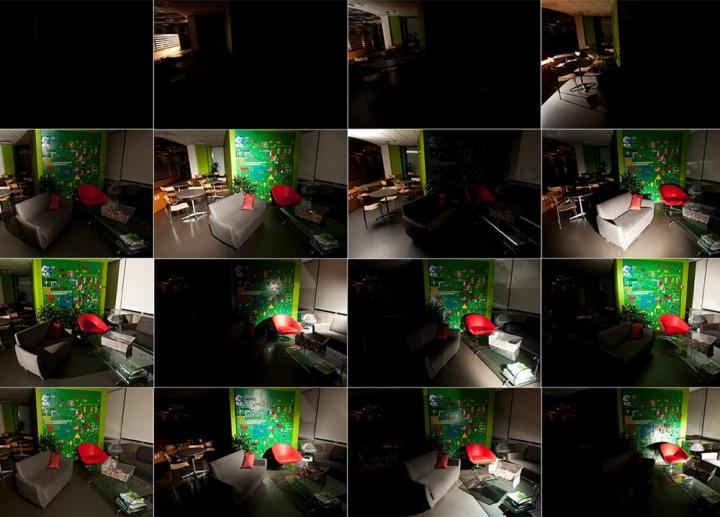
Ever stumbled on a listing for a dream apartment on Craigslist, only to be disappointed when you looked through the photos that are either heavily overexposed or underexposed? If so, then you know how important good lighting is, as it can make or break a sale. These photos are often taken by the broker or landlord who’s using a point-and-shoot or cell phone, and using whatever light is at their disposal. Unless you’re a multimillion-dollar real estate company, chances are you don’t have the budget to hire a pro photographer who has the equipment to control the lighting. But new software developed by researchers at Cornell University with support from Adobe could one day help us change the lighting conditions of a photo after it’s been shot.

The software is an enhancement to “computational lighting design,” a technique that’s currently used by photographers in architecture and advertising to adjust lighting after a scene had been shot using minimal equipment. How it currently works is: a camera on a tripod takes many shots at various exposures while someone walks around a room and repositions a flash to expose different areas of the scene. All these shots are then fed into Photoshop as layers, which can then be used to change the conditions to whatever suits the mood or assignment.

The problem with this technique is that the post-editing process takes a long time, but the Cornell software streamlines that process by sorting and combining layers into three composite images that the researchers call “basis lights,” according to Cornell University’s Cornell Chronicle. “Edge Lighting, which emphasizes the shapes of objects and their shadows; Fill Lighting, which illuminates everything uniformly; and Diffuse Color Light, which brings out the color and texture of every object,” the Chronicle wrote, explaining the three basis lights. “The user can select areas of the image in which to apply varying amounts of each. Adding more Fill Light, for example, lightens shadows.”

“We also introduce modifiers that capture standard photographic tasks, e.g., to alter the lights to soften highlights and shadows, akin to umbrellas and soft boxes,” according to the research paper abstract.
During the research, pro photographers who work with computational lighting design were asked to compare the Cornell software and traditional method, and they found the basis lights gave them a good starting point while reducing time spent. What’s more interesting is that seven novices with limited photography experience were able to produce professional quality results in an average of 15 minutes, the Chronicle wrote.
Kavita Bala, the Cornell associate professor of computer science who’s leading the project along with graduate student Ivaylo Boyadzhiev and Sylvain Paris of Adobe Research, said the software is not ready for primetime, but she hopes a prototype will be available. Bala said the final product would probably become part of Photoshop or Lightroom.
Let’s hope this comes soon, as those real estate brokers and landlords would finally have an easy tool that’ll turn apartments from crappy-looking slums into luxury condos – in photos, at least.
Check out the video below for a demo.
(Images via PetaPixel via Cornell Chronicle/Cornell University)


